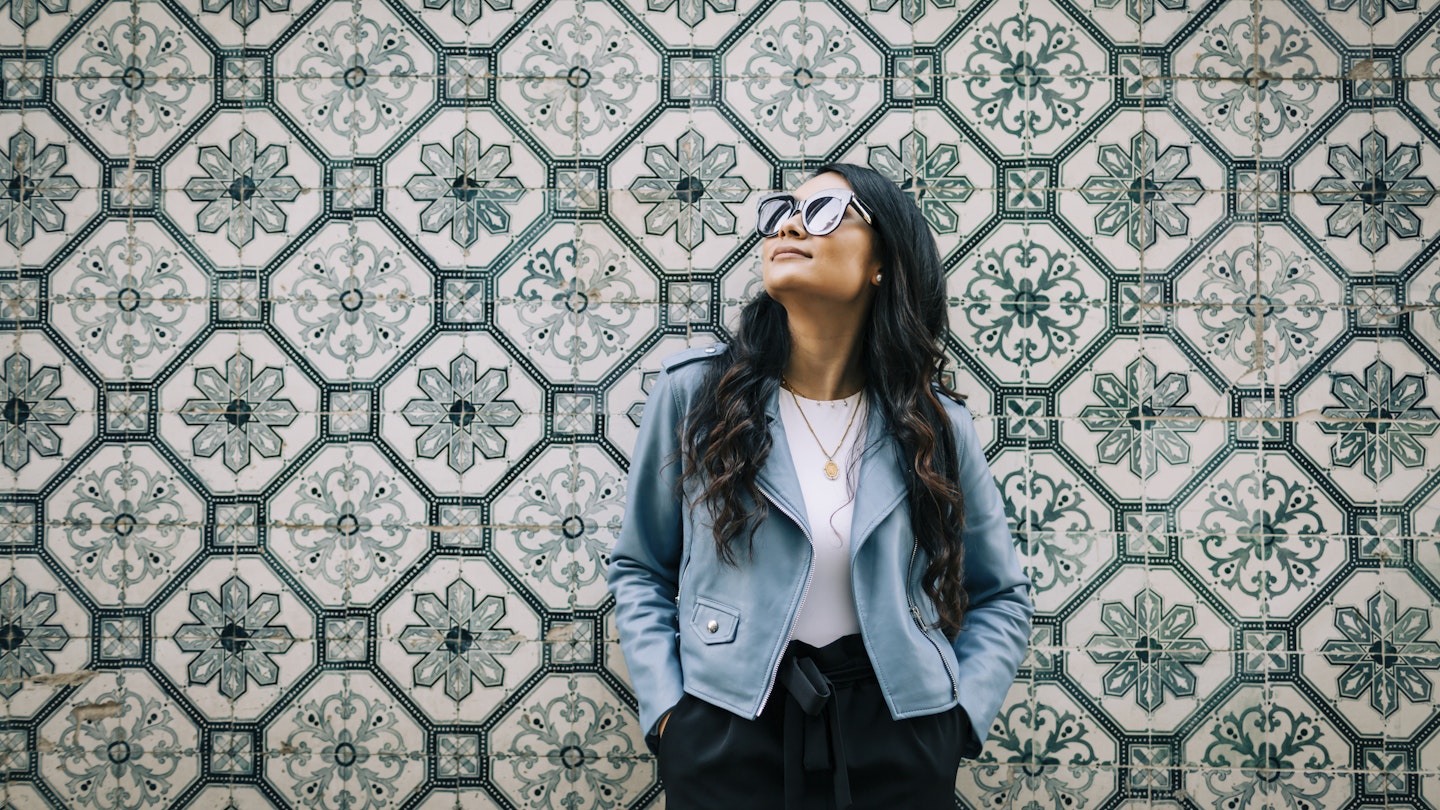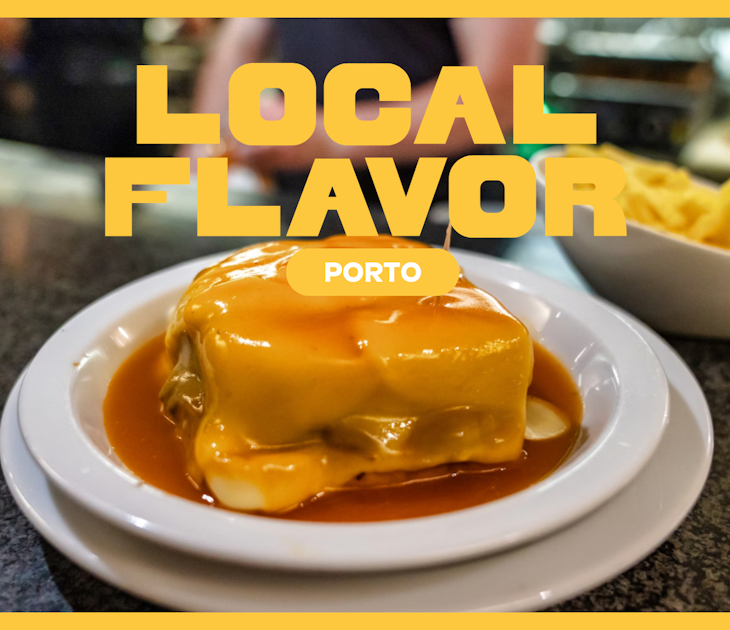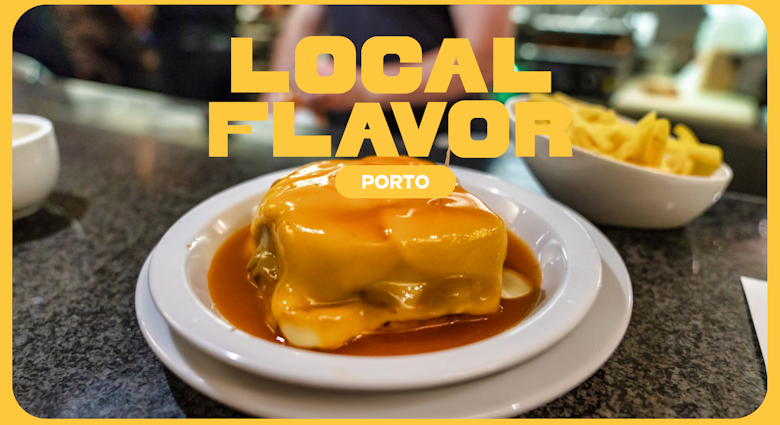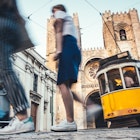With its streets full of iconic hand-painted tiles, Lisbon has been exhibiting art outside for centuries. Beyond the handsome house facades above ground, azulejos (hand-painted tiles) take over the city’s underground network in the shape of abstract paintings and colorful caricatures.
This traditional style of ornamentation is just the start of the outdoor art experience in Lisbon. At street level, artists have transformed entire neighborhoods with giant murals and colorful graffiti. It's a canvas in constant transition – just when you think you’ve seen it all, a new mural pops up on a disused siding or downtown wall.
Here's a guide to exploring Lisbon's iconic street art.
The fine art of Lisbon tiles
It was the Moorish rulers of the medieval period who brought a taste for tiles to the Iberian Peninsula, with the first decorations appearing in Andalusia back in the 13th century. On a trip to Seville in 1498, Portuguese King Manuel I fell for the beauty of azulejo tiling and imported the tradition back to Portugal, kickstarting a national ceramic movement.
Initially, tiles were used to adorn churches, palaces, and even gardens, as a sign of status and wealth. But after Lisbon was ravaged by the earthquake of 1755, tiles became a practical material for rebuilding Portugal's rebounding capital. The trend continued for centuries, giving birth to the iconic tiled facades that adorn the city today. A visit to the Museu do Azulejo is a must if you want to dive deep into the history of this ceramic artform.
Beyond the endless geometric patterns adorning gables, fountains and facades, some panels stand out for their complex figurative scenes. By Largo do Intendente square, the former Fábrica Viúva Lamego ceramics factory draws visitors with its floral motifs and Asian figures that recall Portugal’s ties with the Far East. Over in Largo Rafael Bordalo Pinheiro, tiles are used to create striking Masonic elements.
Perhaps the most ambitious use of azulejos is in the wall panel designed by André Saraiva in Campo de Santa Clara. More than 50,000 tiles make up this huge 21st-century mural, which depicts some of the city’s top landmarks in a bold, modernist style.
While it’s tempting to buy azulejo tiles at Lisbon's flea markets, sadly, some have been taken from the city’s facades. If you’re looking for a souvenir, head instead to Cortiço & Netos; this family-run shop holds a collection of responsibly sourced tiles ranging from the 60s to the 90s, including some rare finds. Alternatively, you can pick up a brush and paint your own tile at a local atelier (workshop) such as Cerâmica São Vicente in Alfama.
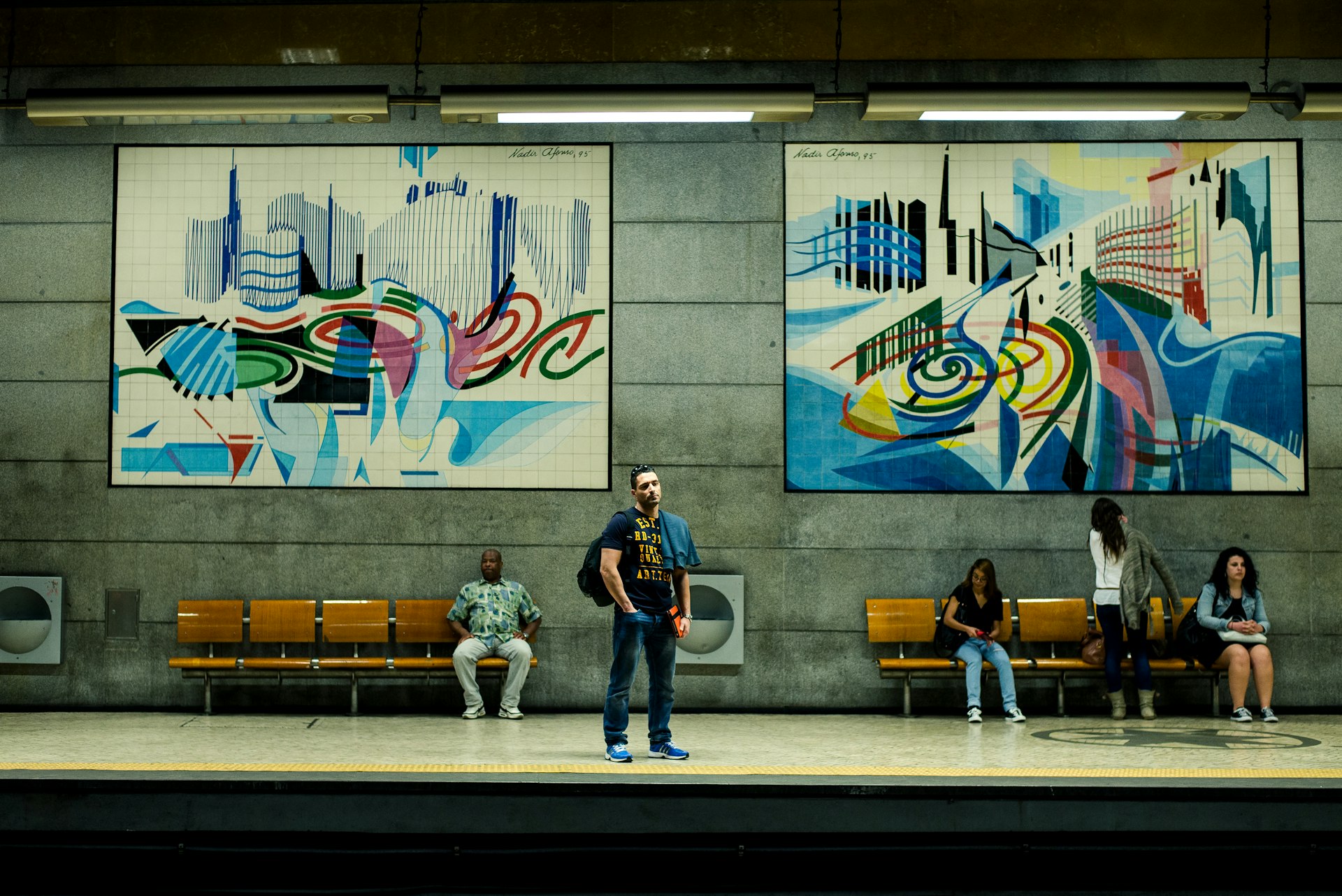
Find fine art underground in Lisbon
Art has also found its way into the city's underground stations, with illustrations, quotes, and even stained-glass structures showcased across the Lisbon Metro network. The metro first arrived in Lisbon in 1959, and with it came a rediscovery of the versatility of azulejo tiles. Painter Maria Keil was among the first artists to fill these urban spaces with bright, contemporary designs. Over the years, other artists pitched in, transforming the underground into a giant art space.
Every station has a different atmosphere and mood. You can catch some of Keil’s minimalist tile patterns at Restauradores station, alongside designs by abstractionist Nadir Afonso. At the Aeroporto stop by Lisbon airport, you’ll find black-and-white caricatures of Portuguese national icons, while the Oriente stop is full of ocean-themed murals commissioned for Expo 98. It’s also worth stopping at Olaias, where industrial metal columns stand out against bright stained-glass ceilings.
The best neighborhoods in Lisbon for urban street art
In Lisbon, street art and history go hand in hand, and a new generation of graffiti-inspired street artists are taking on the city as their canvas. Neighborhoods such as Alfama and Mouraria are an outdoor exhibition space for fado-themed works of street art. A homage to Severa, the city’s first fado singer, can be seen halfway up the Escadinhas de São Cristovão, while the legendary Amália Rodrigues has her face rendered in a cobblestone wall in Rua de São Tomé.
Around Graça, you can spot references to the Carnation Revolution that removed the Estado Novo regime in murals by the likes of Shepard Fairey (the street artist behind the global Obey phenomenon). There are nods to literary figures here, too, like the psychedelic illustration of the poet Fernando Pessoa by AkaCorleone on Rua Damasceno Monteiro.

Art has also helped reshape many formerly run-down neighborhoods on the outskirts of Lisbon. LX Factory in Alcântara is proof of the reviving power of art; this former textile plant is now home to creative workshops mingled with striking urban art pieces. Among them is a giant bee made from a mix of paint and recycled trash – a signature style for local artist Bordalo II, whose work aims to expose the excesses of consumerism in today’s world.
The industrial neighborhood of Marvila has also become something of an open-air museum. It’s here that you’ll find the work of the Underdogs Gallery, the cultural project behind many of the city’s most ambitious street art collaborations.
Most of the large-scale murals you'll spot in Marvila emerged during the MURO art festival in 2017. But new statement pieces are still popping up, like the basketball court painted by Halfstudio in 2020 in nearby Chelas. This vividly colorful work pays homage to neighborhood icon and basketball enthusiast Oliveira Donbell, and also makes a nod to Michael Jordan’s legendary team, the Chicago Bulls.
Further out, near Lisbon’s airport, there's more must-see art in Quinta do Mocho. For years, this district had a rough reputation, tied up with drugs and crime, but in 2014, the O Bairro i O Mundo initiative invited national and international artists to revamp many of the district's run-down facades, creating a new street art sensation. The artworks reflect the neighborhood’s social and cultural diversity and musical influences, with portraits of residents alongside famous music artists such as Eminem and Bob Marley.
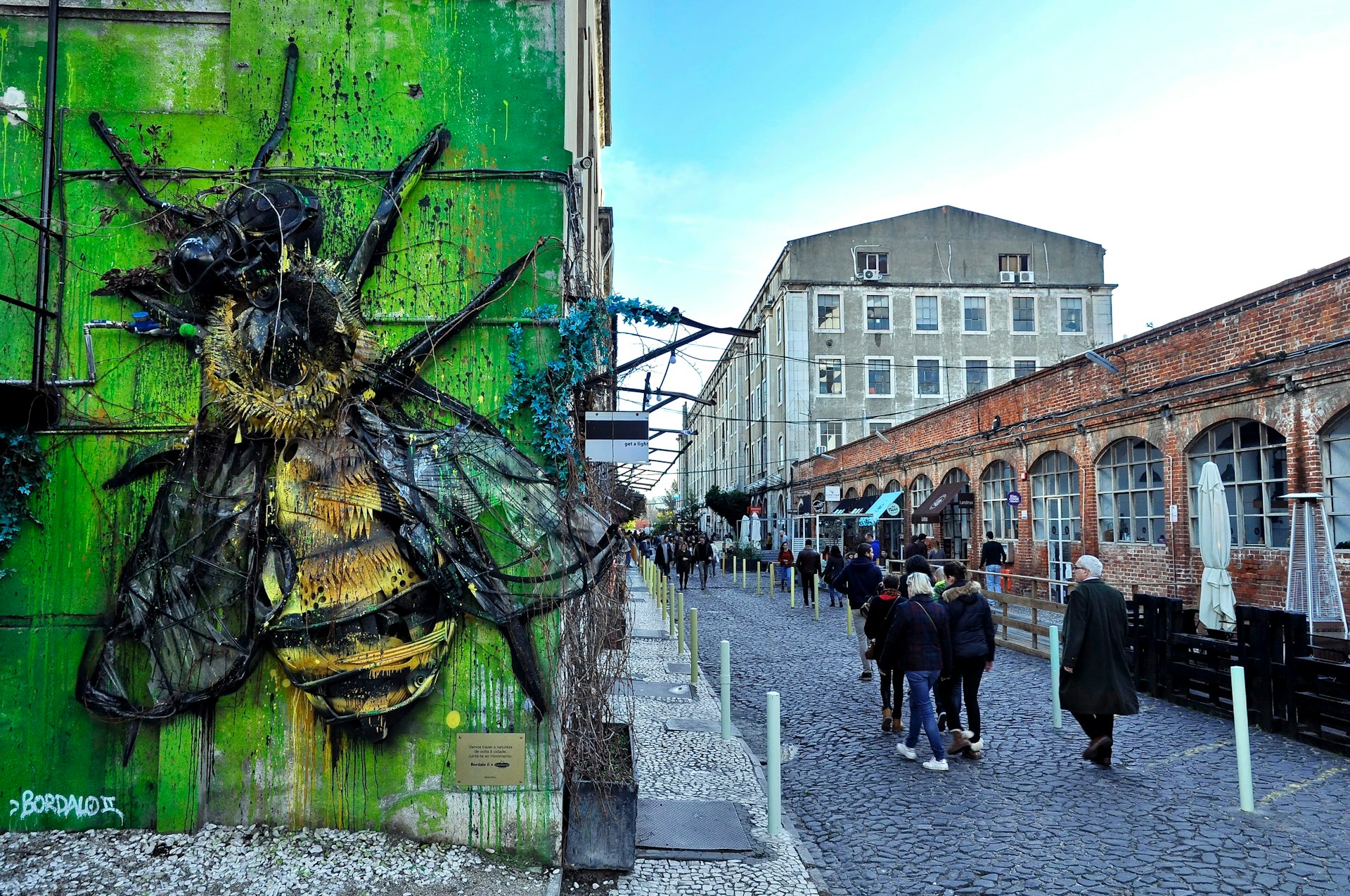
The best street art murals in Lisbon (and where to find them)
For art fans with a tight schedule, here's our pick of the artworks to track down for a taste of Lisbon's exuberant creativity.
- Marielle Franco, Panorâmico de Monsanto: This powerful piece by Alexandre Farto (aka Vhils) adorns the wall of the abandoned restaurant at the Panorâmico de Monsanto viewpoint, paying tribute to Brazilian politician and human rights activist, Marielle Franco, assassinated in Rio de Janeiro in 2018.
- Balance, Arroios: An astoundingly colorful revamp of a public basketball court in Campo dos Mártires da Pátria – the work of local artist, AkaCorleone.
- Half Fox, Santos: Portuguese artist Bordalo II was the mind behind this eye-catching fox made with repurposed trash, looking out over busy boulevard Avenida 24 de Julho.
- Fado Vadio, Mouraria: An irreverent and cheeky homage to Severa, Lisbon’s first fado icon, can be spotted while descending the Escadinhas de São Cristovão steps.
- Revolutionary Woman, Graça: Shepard Fairey's propaganda artwork style pops up all over Lisbon, including in this depiction of a woman with a flower-topped rifle on Rua Natalia Correia, inspired by the Carnation Revolution.
- Poseidon, Alfama: Valencian duo PichiAvo created this huge representation of the god Poseidon, eyeing the Tejo river approvingly near the Santa Apolónia train station.
- Derlon, Alcântara: Heavily influenced by traditional woodcut techniques, Brazilian artist Derlon painted this iconic series of black-and-white characters around LX Factory in 2012.
- Oferenda, Marvila: Following the Ibero-American theme that defined the 2017 MURO art festival, Portuguese illustrator Kruella d’Enfer designed this tropical flower bouquet called “offering” on Rua Alberto José Pessoa.
- Mário Belém, Graça: "Better to be lost here somewhere than on my way to nowhere” is the thought-provoking name of this 2021 piece on Rua Damasceno Monteiro, depicting a girl on the edge of a pot amid lush flowers and philodendron leaves.
How to explore Lisbon’s street art
Walking is the best way to discover the city’s colorful tiled panels and street art murals. The website of the Galeria Arte Urbana is the perfect resource for planning a self-guided tour, with information on pieces of street art across the city.
It pays to time a trip to coincide with the urban art festival MURO in July. A who's who of national and international artists arrive to creatively revamp a new Lisbon neighborhood every year. For tours that explore the background stories behind landmark pieces of street art, contact Lisbon Street Art Tours, or better still, join one of their spray-painting workshops.
You may also like:
The best things you can do for free in Lisbon
The 6 best day trips from Lisbon for surfing, mountains and more
How to conquer Lisbon's hills (and other great ways to get around)

